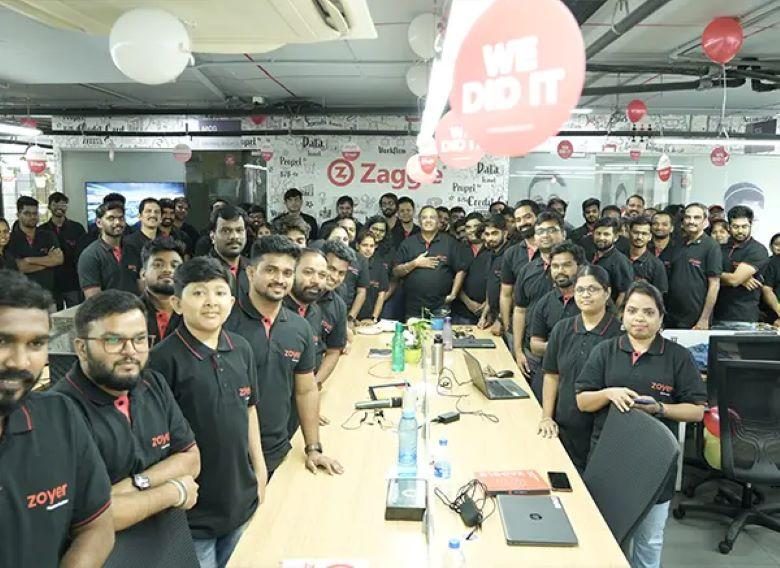Zaggle Prepaid Ocean Services has once again captured public attention, though this time for challenges rather than achievements. Despite posting record-breaking revenue figures for the December quarter, the company’s shares hit the 10% lower circuit on February 10, closing at ₹424.30. What caused this sharp decline? Let’s dive into the details.
Zaggle Prepaid Share Price: What Triggered the Decline?
Zaggle Prepaid Ocean Services, a leader in spend management solutions, reported its Q3FY25 results on Friday after market hours. The figures were impressive at first glance, with revenue soaring by 68.6% YoY to an all-time high of ₹336 crore. However, investors were left unimpressed due to a simultaneous surge in operating expenses, which climbed 72% YoY to ₹308 crore.
This mismatch between revenue and expenses overshadows the otherwise strong quarterly performance. Rising costs, particularly in employee-related expenses and operational expenditures, dented investor confidence, leading to a steep drop in the stock price.
How Did Zaggle’s Financial Performance Shape Up?
Here’s a detailed breakdown of the company’s Q3FY25 financial performance:
Revenue Growth:
- Zaggle recorded its highest-ever quarterly revenue at ₹336 crore, driven by a robust 54% growth in program fees.
- Revenue from the Propel platform saw a remarkable 87% increase, primarily due to festive season redemptions.
Operating Expenses:
- Operating expenses skyrocketed by 72% YoY to ₹308 crore.
- The rise was attributed to workforce expansion, increased cashback and incentive payouts.
EBITDA and Margins:
- EBITDA stood at ₹29 crore, a 45% growth year over year, but EBITDA margins is 9.4%, reflecting the higher cost burden.
Profit After Tax (PAT):
- The company posted a PAT of ₹20 crore, marking a 33% YoY increase, though the rising costs dampened the overall impact of profitability growth.
Why Did Expenses Surge So Sharply?
The sharp increase in expenses can be traced back to Zaggle’s aggressive business expansion strategy:
- Employee Costs:
- A significant rise in employee-related expenses was due to a larger workforce aimed at supporting the company’s growth plans.
- The company disclosed an estimated ₹95-100 million in ESOP expenses for FY25.
- Incentives and Cashback:
- Increased client activity and program usage led to higher cashback and incentive payouts.
- Operational Expenditures:
- Miscellaneous operational costs grew as the company expanded its portfolio of prepaid and credit card offerings.
Customer Base and Partnerships: Key Highlights
Despite the financial strain, Zaggle achieved several notable milestones in the quarter:
- Expanded its customer base to over 3,300 clients.
- Secured new contracts with major brands, including Blinkit, CanFin Homes, BigBasket, Mumbai Metro One, Mahindra First Choice Wheels, and Hitachi India.
These partnerships underscore the company’s growing footprint in the corporate spend management sector, even as it grapples with cost pressures.
Stock Performance: A Mixed Bag
Zaggle’s share price has been on a rollercoaster ride in recent months:
- The stock has dropped 18.3% over the last three months, sliding from ₹519 to ₹424.
- However, it remains a stellar performer over the long term, trading 158% above its IPO price of ₹164.
Zaggle’s Growth Plans: What Lies Ahead?
The company is eyeing robust growth in FY25, with expectations of a 58-63% increase in top-line revenue. Zaggle also explores inorganic growth opportunities through acquisitions, with discussions reportedly at advanced stages.
While the company’s growth story remains intact, controlling costs will be crucial to sustaining investor confidence in the coming quarters.
Summary: Zaggle’s Balancing Act Between Growth and Costs
Zaggle Prepaid Ocean Services finds itself at a crossroads. While its Q3FY25 performance highlights the company’s ability to drive revenue growth, rising operating expenses have emerged as a significant headwind.
Investors will closely monitor to observe how the company balances its ambitious expansion plans with the need to keep costs in check. For now, the focus will remain on Zaggle’s execution strategy as it aims to consolidate its leadership in the SaaS fintech space.




 Easy & quick
Easy & quick
Leave A Comment?